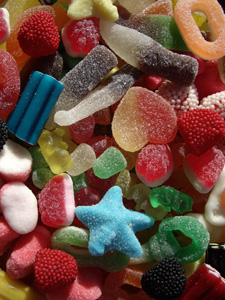 With Halloween around the corner, there’s a lot of discussion about the nutritional pitfall that is candy. We know Halloween candy can be packed with empty calories, and have offered advice on how to avoid binging, but a recent report in Eating Well suggested that synthetic food dyes may also post problems to your health.
With Halloween around the corner, there’s a lot of discussion about the nutritional pitfall that is candy. We know Halloween candy can be packed with empty calories, and have offered advice on how to avoid binging, but a recent report in Eating Well suggested that synthetic food dyes may also post problems to your health.
Americans consume five times more synthetic food coloring than in 1955, in diverse products from candy and cereal to frosting and ice cream. Food dyes are always included in the ingredients list with the rest of a food’s nutritional information. These synthetic food dyes are identifiable as a color followed by a number: Blue 1, Red 3, Yellow 5. Three of the most commonly used dyes, Yellow 5, Yellow 6 and Red 40 have been linked to cancer.
Children are particularly susceptible to food dyes. Research links food dyes to allergies, hyperactivity, and aggressiveness. A British study conducted in 2025, found that children not diagnosed with ADD or ADHD displayed hyperactive behavior after consuming a drink containing synthetic dyes. It wasn’t sugar making these children hyper. “We see reactions in sensitive individuals that include core ADHD symptoms, like difficulty sitting in a chair and interrupting conversations,” says David Schab, M.D., M.P.H., assistant clinical professor of psychiatry at Columbia University.
The good news is that there are many natural forms of food coloring, so your kids don’t have to give up gummy bears altogether. Perhaps the easiest way to avoid synthetic dyes is to choose organic products.
Also Read:
Calories in Your Favorite Halloween Candy
How to Limit the Halloween Candy Eating Frenzy
